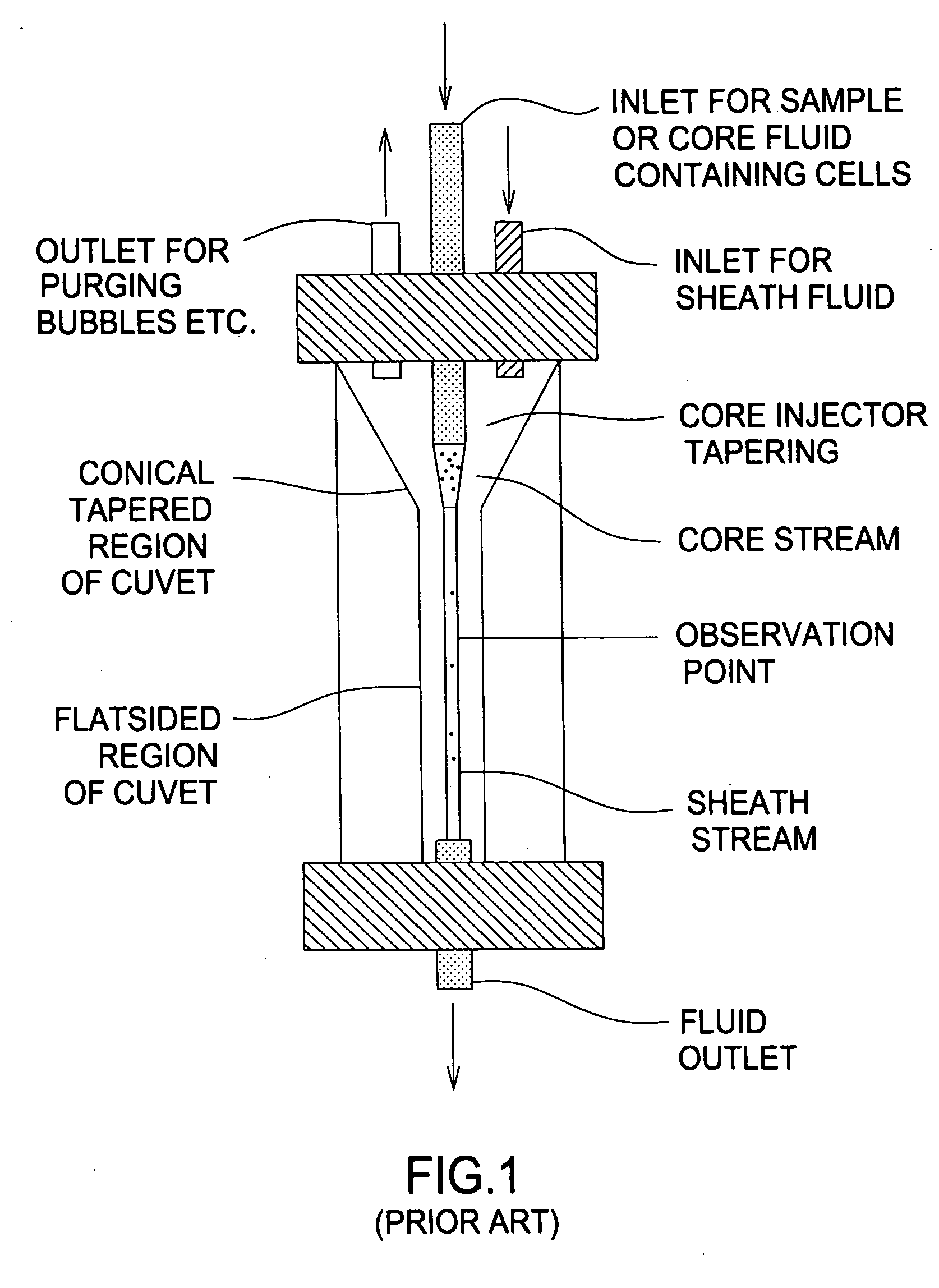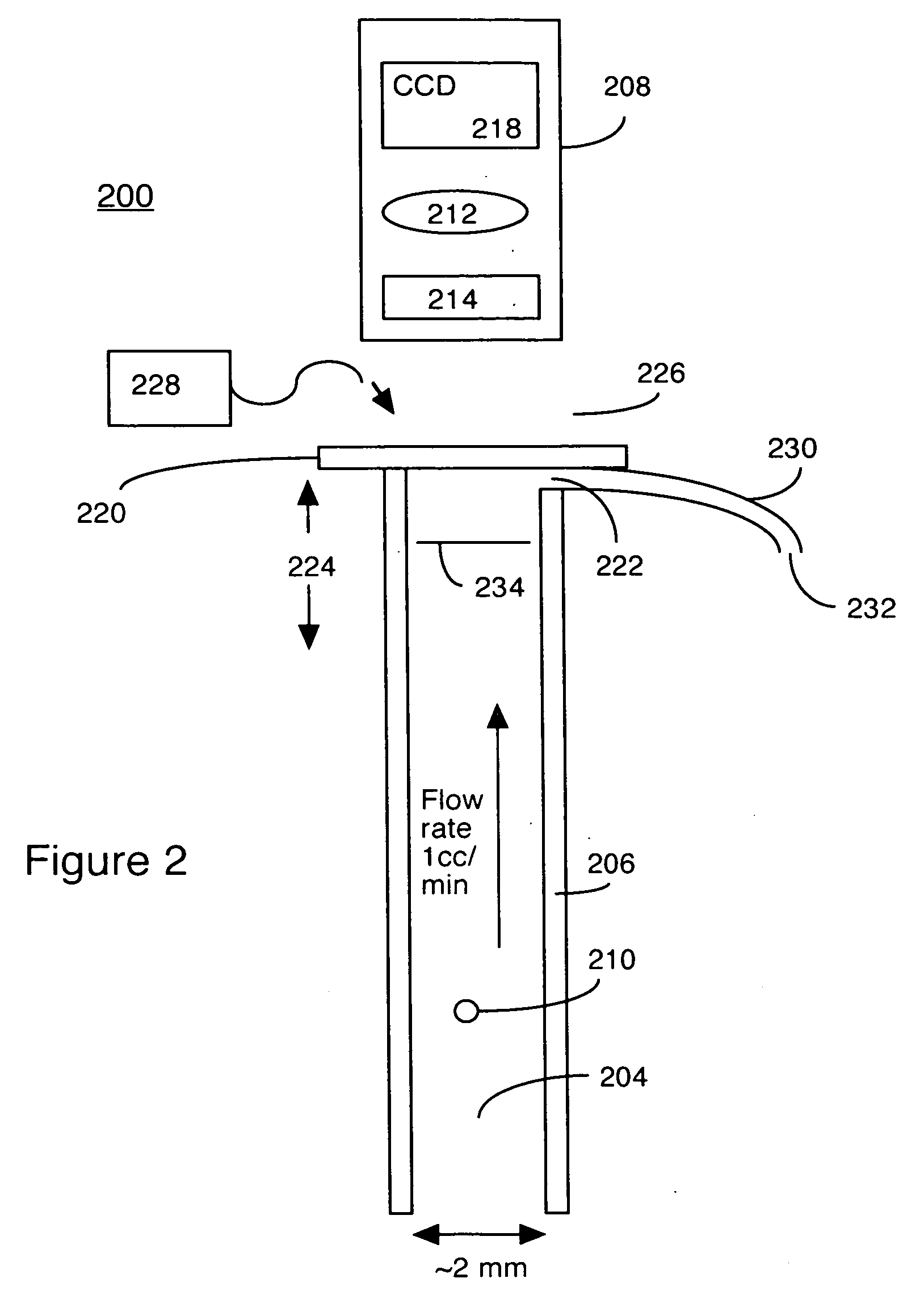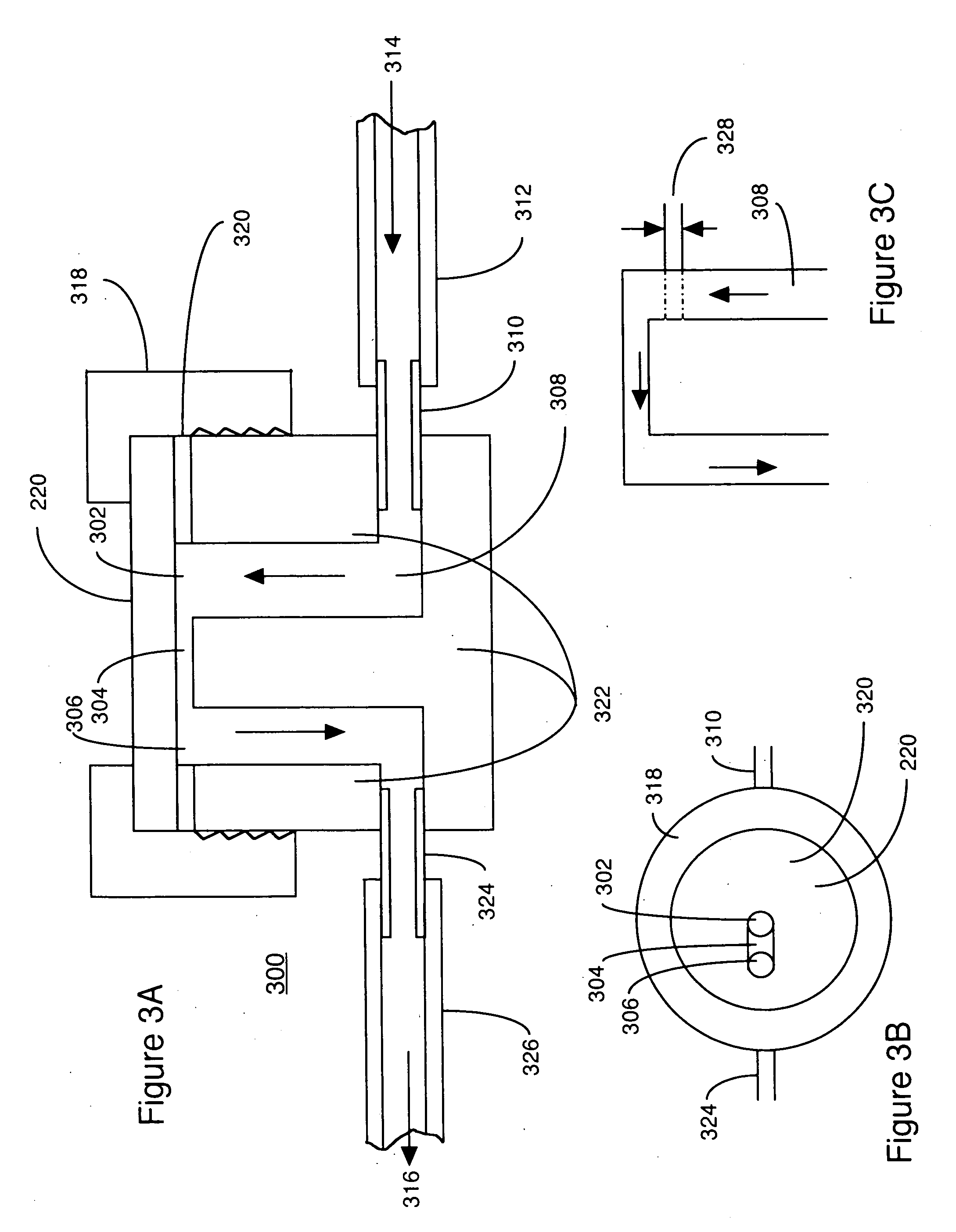Method for selectively staining microorganisms
- Summary
- Abstract
- Description
- Claims
- Application Information
AI Technical Summary
Benefits of technology
Problems solved by technology
Method used
Image
Examples
Embodiment Construction
[0036]FIGS. 4-6 are flow diagrams illustrating variations on the method of the present invention. Those skilled in the art will appreciate other variations within the scope of the invention. For example, the steps may not always be performed in the order shown.
[0037]FIG. 4 is a flow diagram illustrating the method of selectively staining target microorganisms according to the present invention. In steps 402-408, a sample 450 is prepared prior to being introduced into the detection / measuring apparatus, such as the traditional cytometer of FIG. 1 (Prior Art) or the Fountain Flow™ Cytometer of FIGS. 2-3C (Prior Art). The sample includes target microorganisms 452 to be detected, and background particles 454 to be ignored. Dye 458 will flag the target microorganisms, but has a tendency to also flag (or stain) background particles, resulting in false positives. Hence a suppressant 460 is used to suppress the dye within the background particles as well as the fluid medium in general, and a...
PUM
 Login to View More
Login to View More Abstract
Description
Claims
Application Information
 Login to View More
Login to View More - R&D Engineer
- R&D Manager
- IP Professional
- Industry Leading Data Capabilities
- Powerful AI technology
- Patent DNA Extraction
Browse by: Latest US Patents, China's latest patents, Technical Efficacy Thesaurus, Application Domain, Technology Topic, Popular Technical Reports.
© 2024 PatSnap. All rights reserved.Legal|Privacy policy|Modern Slavery Act Transparency Statement|Sitemap|About US| Contact US: help@patsnap.com










